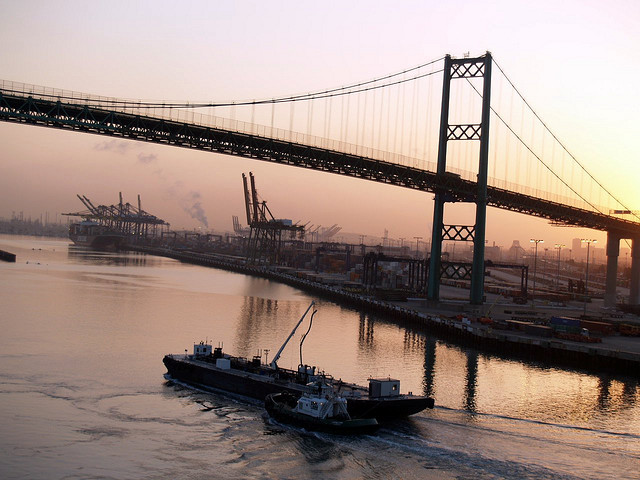
A glimpse of our vast shipping infrastructure
View this complete post...







John Hennessy III,
P.E.

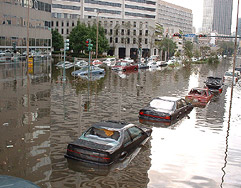
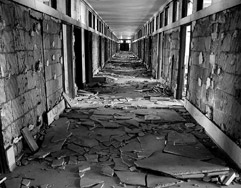
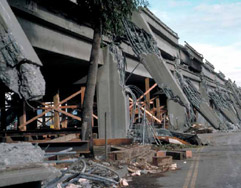
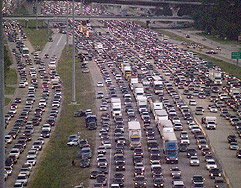
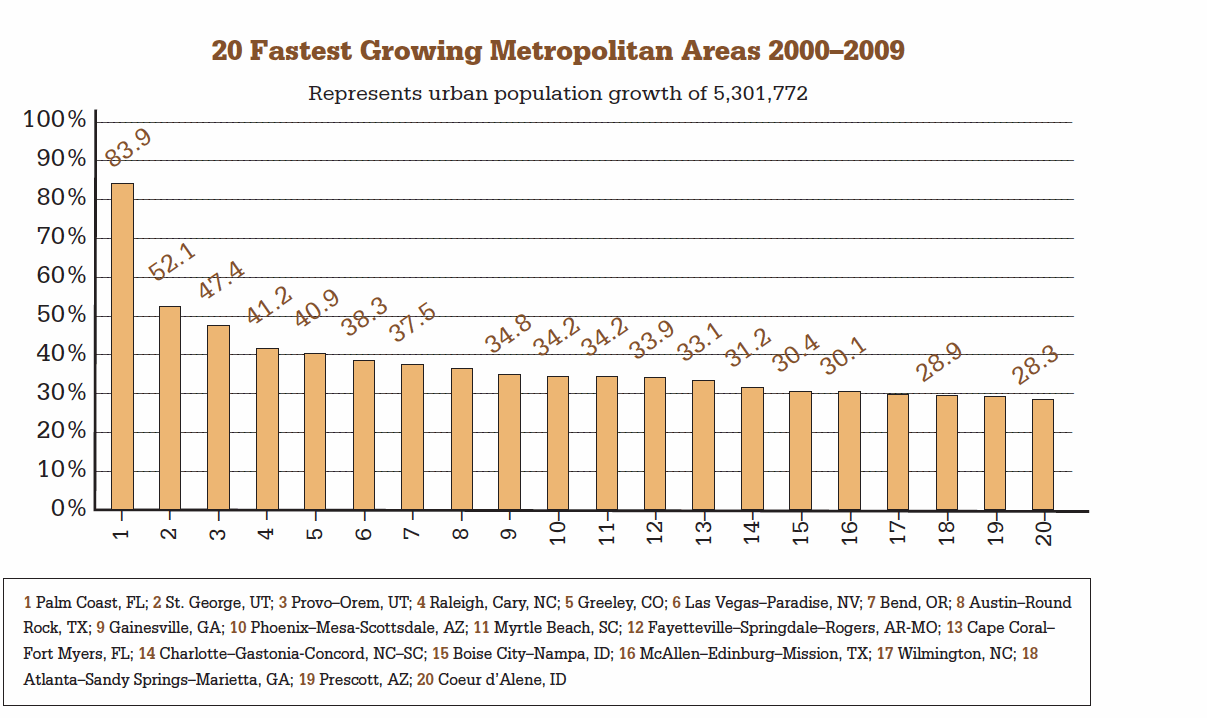
AMERICAN ASSOCIATION OF STATE HIGHWAY AND TRANSPORTATION OFFICIALS
This report, the third in a series on the nation’s transportation capacity needs, focuses on the need to tap the economic might of rural America, be it through access to energy resources, tourism or agriculture. It also identifies underserved cities whose future growth depends on Interstate access. Finally, it underscores the capacity improvements needed to ensure the nation’s security.
Two months ago we reported on the railroad industry’s reaction to the FRA’s directive setting forth the terms of the so-called “Stakeholder Agreements.” Those are the agreements between state authorities and Class I railroads that will govern the shared-use freight-passenger rail service in rail corridors receiving federal aid under the Administration’s high-speed rail (HSR) program. The FRA directive stunned and angered railroad executives by what they regarded as unreasonable demands, and burdensome requirements…We are happy to report that reason and good sense have prevailed. In a press conference on August 20, FRA Administrator Joseph Szabo announced that the agency has withdrawn the controversial directive.
View this complete post...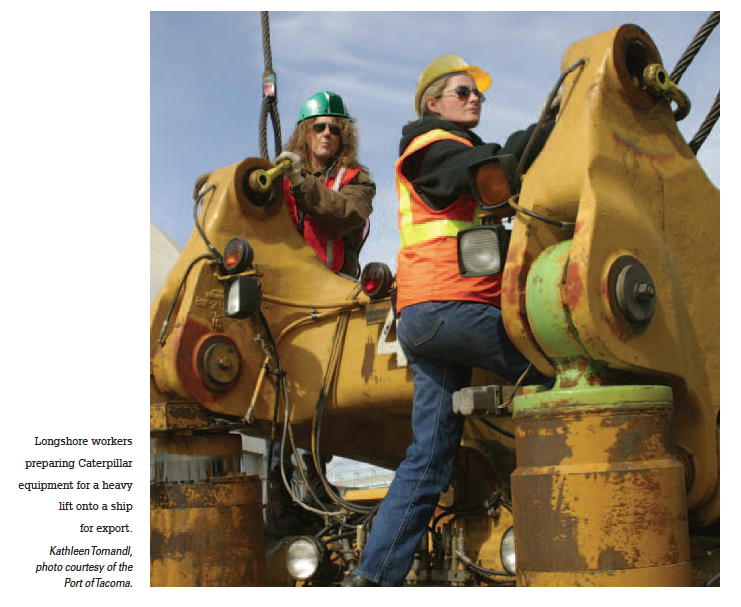
AMERICAN ASSOCIATION OF STATE HIGHWAY AND TRANSPORTATION OFFICIALS
America faces a freight transportation capacity crisis. Our highways, railroads, ports, waterways, and airports require investment well beyond current levels to maintain—much less improve—their performance. All systems are aging and stretched to capacity. The collapse of the economy in late 2008 temporarily reduced demand at seaports, and reduced truck and rail freight volumes. The time it takes for the economy to recover will give highway, rail, and port systems a breather before the capacity of the freight system will again constrain U.S. economic growth. During this period, decision makers will need to find a way to fund the improvements needed to improve the national freight system.
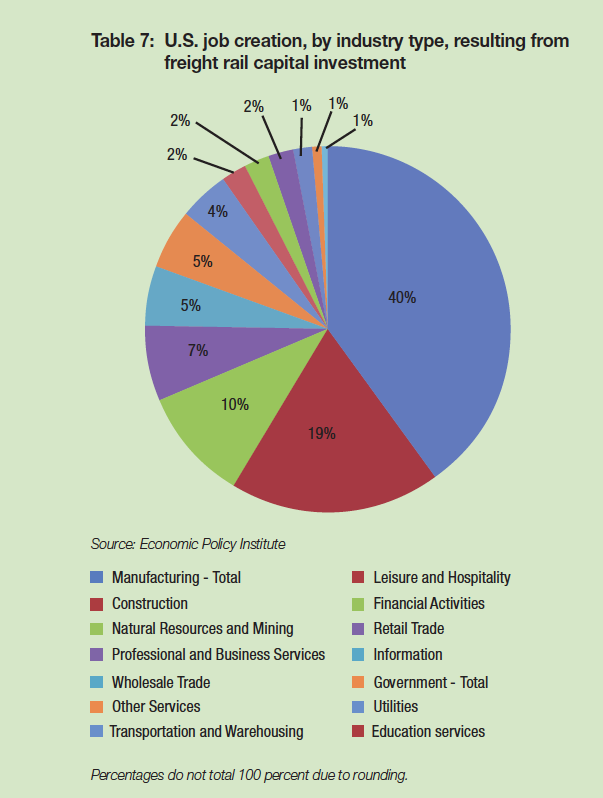
BLUEGREEN ALLIANCE & ECONOMIC POLICY INSTITUTE
Economic models estimate about 7,800 green jobs are created for every billion dollars of freight rail capital investment. Furthermore, the industry has nearly doubled the amount of goods it has shipped without increasing fuel consumption over the past three decades, and creates a fraction of the pollution of other transport modes such as trucking and aviation. Its continued growth will generate green jobs, reduce dependence on foreign oil and contribute to solving climate change.
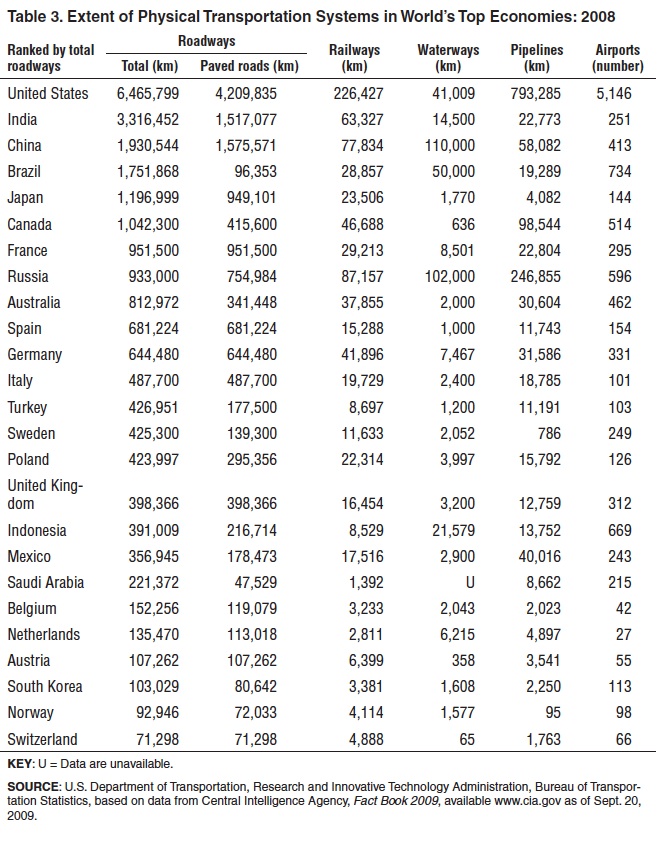
RESEARCH AND INNOVATIVE TECHNOLOGY ADMINISTRATION
BUREAU OF TRANSPORTATION STATISTICS
To move large quantities of goods across the country and around the world, Americans depend on the Nation’s freight transportation system—a vast network of roads, bridges, rail tracks, airports, seaports, navigable waterways, pipelines, and equipment. Today, U.S. households can buy fresh fruits and vegetables in mid-winter, expect fast and reliable next-day deliveries of Internet purchases, and use electronic appliances manufactured thousands of miles away, often in other countries. Because economic activities worldwide have become more integrated and globalized, more goods produced by U.S. factories and farms are bound for export, and imports originate from more than 200 countries. This pace of trade Americans have become accustomed to is made possible by the complex intermodal transportation network that blankets the country and links the United States with world markets.
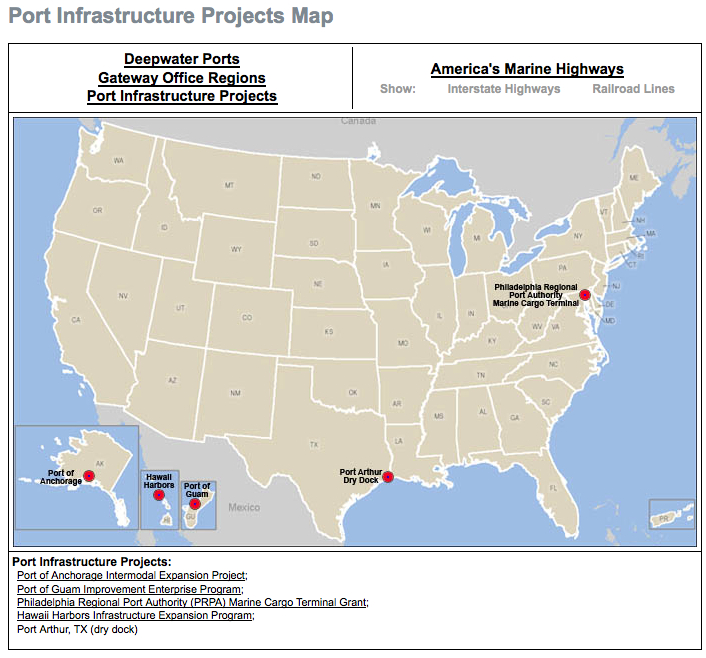
According to a U.S. DOT Report on freight traffic, the number of trucks on our highways will more than double by 2035. Inland waterways, or “marine highways,” could reduce congestion by taking on some of the freight burden.
To make the port-and-waterway system more familiar, the U.S. Maritime Administration offers an interactive map, with information on current maritime infrastructure projects around the U.S. The map also shows inland waterways, interstate highways, railroads, and port locations around the country.
View this complete post...
Kathryn Phillips is the Director of the California Transportation and Air Initiative at Environmental Defense Fund. Before joining Environmental Defense, Kathryn was the senior policy advisor at the Center for Energy Efficiency and Renewable Technologies (CEERT) in Sacramento, and a lobbyist for V. John White Associates. Kathryn also worked for nearly 20 years as a journalist. She wrote for newspapers and magazines on a range of topics, specializing in the later years on science and environmental issues. She is the author of two books about environmental issues.
View this complete post...Follow InfrastructureUSA
Video, stills and tales. Share images of the Infra in your community that demands attention. Post your ideas about national Infra issues. Go ahead. Show Us Your Infra! Upload and instantly share your message.
Is the administration moving fast enough on Infra issues? Are Americans prepared to pay more taxes for repairs? Should job creation be the guiding determination? Vote now!
What do the experts think? This is where the nation's public policy organizations, trade associations and think tanks weigh in with analysis on Infra issues. Tell them what you think. Ask questions. Share a different view.
The Infra Blog offers cutting edge perspective on a broad spectrum of Infra topics. Frequent updates and provocative posts highlight hot button topics -- essential ingredients of a national Infra dialogue.
It is encouraging to finally see clear signs of federal action to support a comprehensive US infrastructure investment plan.
Now more than ever, our advocacy is needed to keep stakeholders informed and connected, and to hold politicians to their promises to finally fix our nation’s ailing infrastructure.
We have already engaged nearly 280,000 users, and hoping to add many more as interest continues to grow.
We require your support in order to rise to this occasion, to make the most of this opportunity. Please consider making a tax-deductible donation to InfrastructureUSA.org.
Steve Anderson
Managing Director
SteveAnderson@InfrastructureUSA.org
917-940-7125